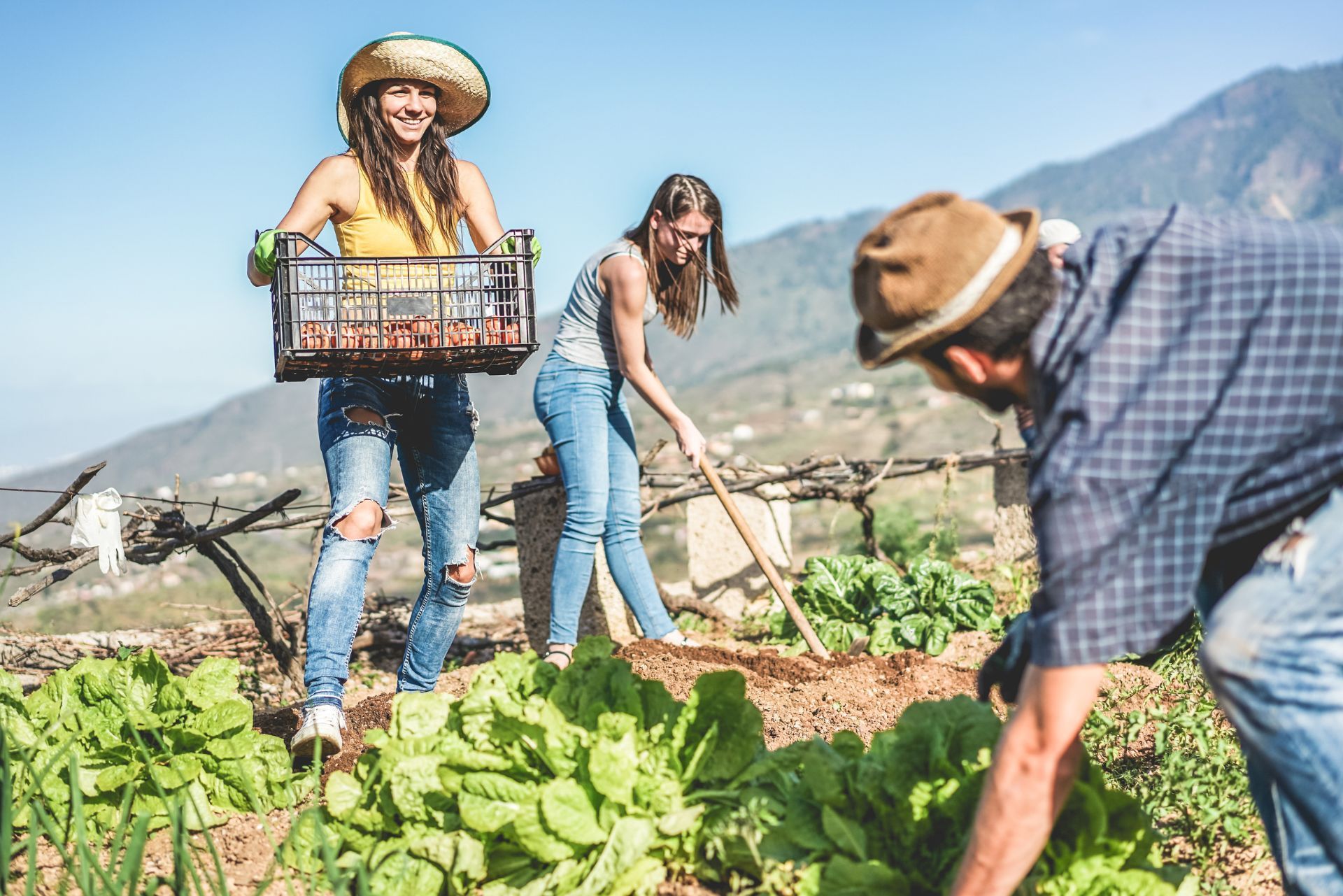
Top 3 Recommended Policies

In recent years, regenerative agriculture has gained traction as a sustainable farming practice that emphasizes soil health, biodiversity, and ecosystem resilience. As Texas farmers increasingly adopt these methods, the need for specialized insurance coverage tailored to regenerative practices has become evident. This article delves into the essential aspects of Texas regenerative agriculture insurance, exploring its importance, coverage options, and the various factors that farmers should consider when seeking protection for their regenerative operations.
Understanding Regenerative Agriculture
Regenerative agriculture is a holistic approach to farming that goes beyond sustainability. It focuses on restoring and enhancing the health of the soil, water, and ecosystems while producing food. This practice includes techniques such as cover cropping, crop rotation, agroforestry, and reduced tillage. The goal is to create a resilient agricultural system that can withstand climate change and other environmental stresses. By prioritizing ecological balance, regenerative agriculture not only seeks to produce food but also to heal the land, making it a vital strategy in the fight against environmental degradation.
The Principles of Regenerative Agriculture
At its core, regenerative agriculture is built on several key principles:
- Soil Health: Improving soil structure and fertility through organic matter and microbial activity.
- Biodiversity: Encouraging a diverse range of plants and animals to create a balanced ecosystem.
- Water Management: Enhancing water retention and reducing runoff through better land management practices.
These principles not only contribute to environmental sustainability but also improve the economic viability of farms by increasing yields and reducing input costs over time. For instance, healthier soils can lead to more resilient crops that require fewer chemical inputs, ultimately benefiting both the farmer’s bottom line and the environment. Furthermore, the integration of livestock in crop rotations can enhance nutrient cycling and pest control, making the entire system more efficient and self-sustaining.
The Importance of Insurance in Regenerative Agriculture
Insurance plays a crucial role in protecting farmers against unforeseen events such as natural disasters, pests, and market fluctuations. For those practicing regenerative agriculture, having the right insurance coverage can safeguard investments in innovative practices and technologies. It also provides peace of mind, allowing farmers to focus on improving their operations without the constant worry of financial loss. Additionally, specialized insurance products tailored for regenerative practices can encourage more farmers to adopt these methods by mitigating the financial risks associated with transitioning from conventional farming.
Moreover, as regenerative agriculture gains traction, insurers are beginning to recognize the long-term benefits of supporting these practices. By offering incentives or lower premiums for farmers who implement regenerative techniques, insurance companies can promote sustainable farming while also reducing their own risk exposure. This creates a symbiotic relationship between farmers and insurers, where both parties benefit from a commitment to ecological stewardship and resilience in the face of climate challenges.

Types of Insurance Coverage for Regenerative Agriculture
Farmers engaged in regenerative agriculture in Texas have access to several types of insurance coverage. Each type serves a unique purpose and addresses different risks associated with farming.
Crop Insurance
Crop insurance is essential for protecting against losses due to natural disasters, such as droughts, floods, or hail. In Texas, farmers can choose from various crop insurance options, including:
- Actual Production History (APH) Insurance: This coverage is based on the farmer's historical yield data and protects against yield losses.
- Revenue Protection (RP) Insurance: This option safeguards against revenue losses due to low yields or falling market prices.
Farmers practicing regenerative agriculture may benefit from crop insurance tailored to their specific practices, ensuring they are adequately covered for the unique risks they face. Additionally, some insurance providers offer programs that incentivize sustainable practices, allowing farmers to receive better rates or additional coverage for implementing environmentally friendly methods that enhance soil health and biodiversity.
Liability Insurance
Liability insurance protects farmers from legal claims arising from accidents or injuries that occur on their property. This coverage is particularly important for regenerative farmers who may host workshops, farm tours, or community events. Liability insurance can cover:
- Injuries to visitors or customers on the farm.
- Damage to neighboring properties or crops.
Having liability insurance ensures that regenerative farmers can engage with their communities without the fear of financial repercussions from unforeseen incidents. Furthermore, many regenerative farmers actively promote education about sustainable practices, which can lead to increased foot traffic on their farms. As such, a robust liability insurance policy not only protects against accidents but also allows farmers to foster a safe and welcoming environment for learning and collaboration.
Property Insurance
Property insurance covers physical assets, including buildings, equipment, and machinery. For regenerative farmers, this coverage is vital as they often invest in specialized equipment and infrastructure to support their practices. Key aspects of property insurance include:
- Coverage for barns, silos, and storage facilities.
- Protection for tools and machinery used in regenerative practices.
By securing property insurance, farmers can protect their investments and ensure their operations can continue in the event of damage or loss. Additionally, many regenerative farmers utilize innovative technologies, such as solar panels or rainwater harvesting systems, which may also require specific coverage. Insurers are increasingly recognizing the value of these sustainable investments, and some policies may offer additional benefits or discounts for incorporating green technologies, further supporting farmers' commitment to environmental stewardship.
Factors to Consider When Choosing Insurance
When selecting insurance coverage for regenerative agriculture, farmers should consider several factors to ensure they have the right protection in place.
Understanding Coverage Needs
Every farm is unique, and the insurance needs will vary based on the type of crops grown, the scale of operations, and the specific regenerative practices employed. Farmers should conduct a thorough assessment of their operations to determine the coverage required. This may include:
- Evaluating historical yield data to assess crop insurance needs.
- Identifying potential liability risks based on farm activities.
By understanding their specific coverage needs, farmers can select policies that provide adequate protection against potential risks. Additionally, farmers should consider the impact of climate variability on their operations. For instance, the increasing frequency of extreme weather events may necessitate additional coverage for natural disasters, such as floods or droughts, which can severely affect crop yields. Engaging in proactive risk management strategies, such as diversifying crops or implementing water conservation practices, can also play a crucial role in shaping their insurance requirements.
Working with Specialized Insurance Agents
Finding an insurance agent with experience in regenerative agriculture can be invaluable. Specialized agents understand the unique challenges and risks faced by regenerative farmers and can help tailor coverage options accordingly. They can also provide insights into:
- Available discounts or incentives for sustainable practices.
- Policy options that align with regenerative agriculture principles.
Collaborating with knowledgeable agents ensures that farmers receive personalized service and support throughout the insurance process. Moreover, these agents can assist farmers in navigating the often complex landscape of agricultural insurance programs, including federal and state assistance programs designed specifically for sustainable farming practices. This guidance can be particularly beneficial for new farmers who may be unfamiliar with the intricacies of agricultural insurance or those transitioning from conventional to regenerative methods.
Reviewing Policy Terms and Conditions
Before committing to an insurance policy, it is crucial for farmers to thoroughly review the terms and conditions. Key elements to consider include:
- Exclusions: Understanding what is not covered under the policy.
- Deductibles: Evaluating the out-of-pocket costs associated with claims.
- Coverage Limits: Ensuring that the policy limits are sufficient to cover potential losses.
Taking the time to review these details can prevent unpleasant surprises when filing a claim. Furthermore, farmers should be aware of the policy renewal process and any changes that may occur in coverage terms over time. Regularly revisiting their insurance needs, especially after significant changes in farm operations or practices, can help ensure that their coverage remains relevant and effective. Engaging in discussions with their insurance provider about potential updates or enhancements to their policy can also foster a more robust safety net for their regenerative farming endeavors.
Benefits of Regenerative Agriculture Insurance
Investing in regenerative agriculture insurance offers numerous benefits that can enhance the resilience and sustainability of farming operations in Texas.
Financial Security
One of the primary advantages of having insurance coverage is the financial security it provides. Farmers can mitigate the risks associated with unpredictable weather patterns, market fluctuations, and other uncertainties. This financial cushion allows them to:
- Continue investing in regenerative practices without fear of losing everything.
- Plan for the future with greater confidence.
Additionally, having insurance can facilitate access to loans and grants, as lenders often view insured operations as lower risk. This can open doors to further investment in technology and equipment that enhance productivity and sustainability. For instance, farmers can invest in precision agriculture tools that optimize resource use, thus maximizing yields while minimizing environmental impact.
Encouragement of Sustainable Practices
Insurance companies are increasingly recognizing the value of sustainable farming practices. By offering tailored coverage options for regenerative agriculture, insurers encourage more farmers to adopt these methods. This shift can lead to:
- A healthier environment through improved soil and water management.
- Enhanced biodiversity and ecosystem resilience.
As more farmers embrace regenerative agriculture, the collective impact on the environment can be significant. Furthermore, these practices often lead to improved crop quality and yield, which can result in higher market prices. Farmers who adopt regenerative methods are not only contributing to environmental health but also positioning themselves competitively in the marketplace, where consumers are increasingly seeking sustainably produced goods.
Support for Community Engagement
Regenerative farmers often engage with their communities through educational programs, workshops, and farm tours. Insurance coverage, particularly liability insurance, allows them to host these events without the fear of legal repercussions. This community engagement fosters:
- Greater awareness of sustainable farming practices.
- Stronger connections between farmers and consumers.
By providing a safe environment for community interactions, regenerative farmers can promote their practices and inspire others to adopt sustainable methods. These engagements also create opportunities for local economies to thrive, as farmers can sell directly to consumers, thereby reducing the carbon footprint associated with transportation. Moreover, community-supported agriculture (CSA) programs can flourish, allowing consumers to invest directly in local farms and receive fresh produce in return, which strengthens the bond between the land and the people who rely on it.
Challenges in Obtaining Insurance for Regenerative Practices
While insurance for regenerative agriculture is becoming more accessible, several challenges remain. Understanding these obstacles can help farmers navigate the insurance landscape more effectively.
Limited Awareness Among Insurers
Despite the growing popularity of regenerative agriculture, some insurance providers may still lack a comprehensive understanding of these practices. This can lead to:
- Inadequate coverage options tailored to regenerative methods.
- Higher premiums due to perceived risks associated with unconventional farming practices.
Farmers may need to advocate for themselves and educate insurers about the benefits and resilience of regenerative agriculture.
Complexity of Policies
Insurance policies can be complex and difficult to understand. Farmers may find it challenging to navigate the various options available and determine which policies best suit their needs. This complexity can result in:
- Misunderstandings about coverage limits and exclusions.
- Inadequate protection due to lack of knowledge.
Farmers should seek guidance from experienced agents and take the time to thoroughly review policy details before making decisions.
Cost Considerations
The cost of insurance can be a significant concern for farmers, particularly those operating on tight budgets. While the long-term benefits of insurance often outweigh the costs, farmers may face challenges in affording premiums, especially during years of low yields or market downturns. Strategies to address cost considerations include:
- Exploring available subsidies or financial assistance programs.
- Comparing quotes from multiple insurance providers to find the best rates.
- By being proactive, farmers can find affordable insurance solutions that meet their needs.

Future Trends in Regenerative Agriculture Insurance
The landscape of regenerative agriculture insurance is evolving, and several trends are shaping the future of coverage options for Texas farmers.
Increased Customization of Policies
As more farmers adopt regenerative practices, insurance providers are beginning to offer more customized policies that cater specifically to these methods. This trend is likely to continue, leading to:
More tailored coverage options that reflect the unique risks of regenerative agriculture.
Incentives for farmers who implement sustainable practices, such as reduced premiums.
This customization can help ensure that farmers receive the protection they need while promoting the adoption of regenerative practices.
Integration of Technology
Advancements in technology are transforming the agricultural sector, and insurance is no exception. The integration of technology in insurance processes can lead to:
- Improved data collection for more accurate risk assessments.
- Streamlined claims processes through digital platforms.
As technology continues to evolve, farmers can expect more efficient and effective insurance solutions tailored to their regenerative practices.
Emphasis on Climate Resilience
With climate change posing significant challenges to agriculture, insurance providers are increasingly focusing on climate resilience. This emphasis may result in:
- Policies that reward farmers for adopting practices that enhance soil health and biodiversity.
- Coverage options that specifically address climate-related risks.
By prioritizing climate resilience, insurance providers can support farmers in building more sustainable and adaptive agricultural systems.
Conclusion
Texas regenerative agriculture insurance is an essential component of supporting sustainable farming practices in the state. As farmers embrace regenerative methods, having the right insurance coverage can provide financial security, encourage community engagement, and promote environmental stewardship. By understanding the various types of coverage available, considering key factors when selecting insurance, and staying informed about industry trends, Texas farmers can effectively protect their regenerative operations and contribute to a healthier agricultural landscape.
As the regenerative agriculture movement continues to grow, the insurance industry will likely adapt to meet the evolving needs of farmers. By fostering collaboration between farmers, insurers, and agricultural organizations, the future of regenerative agriculture insurance looks promising, paving the way for a more sustainable and resilient farming community in Texas.
Contact Us

